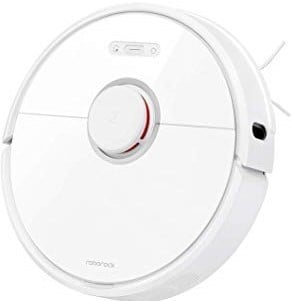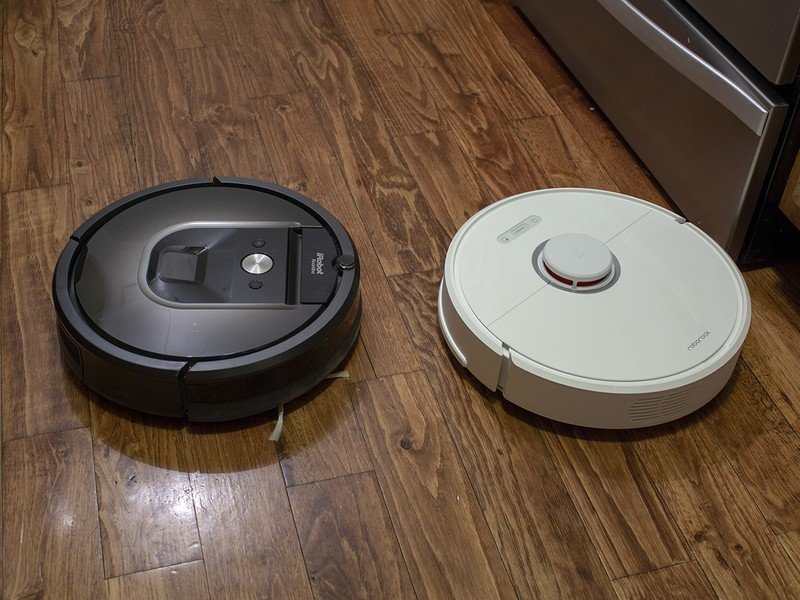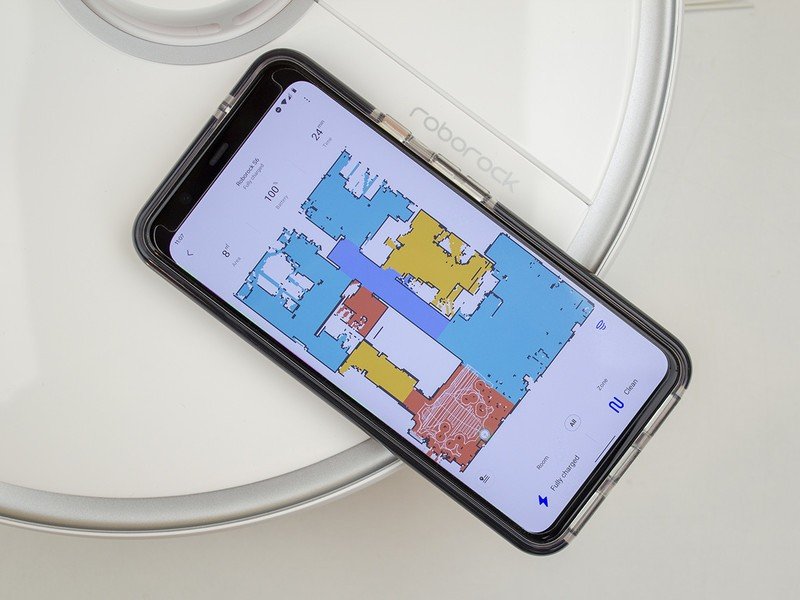iRobot Roomba 980 vs. Roborock S6: Which smart vacuum should you buy?

Roborock S6

The Roborock S6 does it all. From vacuuming to mopping, it'll cover every kind of floor you have and finish the job with plenty of time to spare.
Roborock S6
Reasons to buy
Reasons to avoid
iRobot Roomba 980

iRobot's Roomba 980 has been around for a few years now. It's the robot vacuum that ushered in the era of smart, connected robot vacuums.
iRobot Roomba 980
Reasons to buy
Reasons to avoid
iRobot launched the Roomba 980 back in September 2015, a seeming eternity in the world of smartphones, but it's not as big of a deal in the world of robot vacuums. That's because, unlike smartphones, robot vacuums aren't reliant on the newest processors or the hot new screen tech. iRobot and Roborock can also update their vacuums and add new features, something that both companies have a rock-solid history of doing. That means robot vacuums like the Roomba 980 are still viable products, even several years after release.
| Header Cell - Column 0 | iRobot Roomba 980 | Roborock S6 |
|---|---|---|
| Robot dimensions | 13.8" x 13.8" x 3.6" | 13.7" x 13.7" x 3.7" |
| MSRP | $799 | $649 |
| Rated suction | 1670Pa | 2000Pa |
| Maximum runtime (in minutes) | 120 | 180 |
| Filter | HEPA | Washable |
| Bin size | 600ml | 600ml |
| Navigation | Camera | Laser |
| Real-time mapping | No | Yes |
| Virtual barriers | Physical lighthouse | Virtual No-go lines, No-go zones |
| Zone cleaning | No | Yes |
| Per-room cleaning | Yes | Yes |
| Scheduled cleaning | Yes | Yes |
| Mopping attachment | No | Yes |
| Virtual Assistant compatibility | Google Assistant, Alexa | Alexa |
If this were the smartphone industry, you would expect to have to buy the latest robot vacuum to get the best new features. While that's true, in some cases, iRobot has done an impeccable job of bringing feature parity to the Roomba 980 since it launched over four years ago. Owners of the Roomba 980 have likely been pretty pleased with iRobot's software improvements over the last four years. Still, the Roomba 980 makes little sense to purchase over iRobot's newer and similarly priced Roomba i7.
Should you upgrade?
So this begs the real question: if you're already the owner of a Roomba 980, does it make sense to switch over to a Roborock S6? At a lower price than iRobot's Roomba i7, the Roborock S6 packs in a ton of features and a robust app with even more features than iRobot offers. Roborock also has a similarly good track record of updating its robot vacuums with new features over the years.
What do both of these robots have in common? They share a common round shape and can give you a detailed cleaning history after each and every cleaning. Both vacuums offer scheduled cleanings via the accompanying app, and you can also clean individual rooms on a whim with either robot.
They both also offer smart charging, which will intelligently assess how long it takes to clean your home and, if you have a larger home, will return to the dock and charge only enough to finish the job. That cuts down on cleaning time versus vacuums that have to fully charge before resuming a cleaning operation. You can also utilize Amazon Alexa to connect to either vacuum, bringing the future of self-vacuuming homes to your home, right now.
Get the latest news from Android Central, your trusted companion in the world of Android
Hear me out

Vacuums are annoyingly loud. When you're using a standard vacuum, it's pretty much understood that you're not going to be having a conversation or watching a movie at the same time. As a four-year-old robot vacuum, the average 70dB of noise created by the Roomba 980 is a bit loud. The Roborock S6 offers over 300Pa greater suction power and, yet, a maximum noise level of around 45dB.
The Roborock S6 is considerably quieter than the Roomba 980 and, in quiet mode, is barely above a quiet conversational level, making it easy to run even while watching TV. Roborock's motors on the S6 are also more efficient than the Roomba 980's, offering a longer runtime in all suction modes (120 vs. 180 minutes).
Stay out of my room

The Roomba 980 ships with two "virtual walls" in its box. These miniature lighthouses can be used as a way to block off entire rooms or to cordon off small circular areas that the vacuum should stay away from. While these can be handy ways of physically blocking off an area of your home, you'll need to replace the batteries over time and, since they are physical objects, you'll need to purchase additional ones if you wish to block off more than two areas in your home.
Roborock offers a way to do all of this through its app using no-go lines and no-go zones. Lines can be drawn in the app to draw a virtual wall that the Roborock S6 will not pass, and no-go zones are rectangles that can be custom-sized to section off smaller areas. Roborock also offers a unique way of cleaning specific spots in your house via the 'zone cleaning' feature. Functionally it's similar to no-go zones. However, this time around you're drawing rectangles on your floorplan where you want the vacuum to clean.
Watch me work
The Roomba 980 was one of the first robot vacuums to feature actual intelligent navigation. The camera up top allows it to see the world around it and plan the best route through each of your rooms. It also means it knows where it's at in your house and can get back to the charger when the job is complete.
Roborock goes several steps further than this with its laser-guided navigation and even offers a way to, quite literally, watch it working through the Roborock app via the real-time location on the app's floorplan. Laser-guided navigation also means it can work in the dark just as effectively as it works in daylight, while the Roomba 980's cameras have more difficulty when it doesn't have enough light.
How about those hard to clean spots

A brush does a pretty good job of cleaning hardwood and tile floors, but what happens when your kids spilled juice on the floor, and now it's all sticky? The Roborock S6 comes equipped with a mopping attachment that helps better clean hardwood and tile floors than just a brush can. The pads on the mop attachment can be easily washed in a washing machine and reused, and disposable pads are also included.
Then comes the question of area rugs. It's not the most widely known issue, but first-generation cliff detection sensors, like the ones outfitted on the Roomba 980, have a hard time differentiating a cliff (i.e., stairs) from a dark area rug. If you've got a Roomba 980 and have black or very dark area rugs, you'll know that the vacuum regularly gets "lost" when it gets to these parts of your home. The cliff detection sensors on the Roborock S6 can tell these two events apart and can clean dark area rugs just as well as any other color in the house.
A tale of two brushes

Roborock and iRobot both utilize a combination of silicone and traditional fabric brushes, but these two vacuums are a mirror image of one another in this regard. On the Roomba 980, iRobot utilizes a pair of silicone brushes for its main rollers, while the side-brush is made up of more traditional bristles. Roborock, on the other hand, uses a combination of silicone and traditional bristles on its main roller, while the side-brush is made entirely of flexible silicone. In both cases, it's the silicone brush that's easier to maintain over time.
iRobot's dual silicone rollers pull debris inward and don't feature bristles that get hair tangled up into them. Instead, hair makes its way to the outside of the rollers and then sucked inside for storage, making hair removal as easy as popping the rollers off and sliding the hair out. That side brush, on the other hand, tends to get bent over time as the traditional bristles don't hold up to wear and tear as well as silicone ones would.
Roborock utilizes a combination of silicone and bristle rollers, which tends to attract more hair but doesn't store it as neatly as iRobot's design. You can still remove the roller and pop off the sides for easier removal of the hair, but it's not as effortless as iRobot's design. That side-brush, on the other hand, is made entirely of silicone and not only holds up better over time, but the motor that powers it adjusts the speed for greater efficiency in corners and on the edges of rooms.
And the winner is…

As a vacuum that's nearly four years newer, the Roborock S6 is clearly the better choice in every way. From the quieter, yet more powerful suction motor to the highly advanced navigation, it just makes more sense to choose the Roborock S6 versus the Roomba 980. It's also at least $150 cheaper on any given day of the year, making this an easy recommendation for all types of households.
Owners of the iRobot Roomba 980 might be wondering whether or not the Roborock S6 is worth upgrading to from their existing Roomba 980, and that answer is pretty clear too. While the Roomba 980 has been a fantastic robot vacuum over the past several years, the quieter operation of the Roborock S6 means you won't have to wait until you're out of the house to run your robot. It can also clean hardwood and tile floors better thanks to the mopping pad that Roborock includes with every S6.
On top of that, the more advanced laser-guided navigation, complete with the real-time location in the app, will ensure that your home gets a more meticulous clean than ever. Roborock also offers zone cleaning features that iRobot doesn't offer on any model and a way to block off areas of the house without having to purchase additional physical, virtual wall lighthouses.

Vacuuming and mopping, all at once.
With Roborock's advanced laser-guided navigation, you'll never wonder where your vacuum is or what it was able to clean. The Roborock app shows you where the vacuum has been and gives you total control over where the robot goes.

